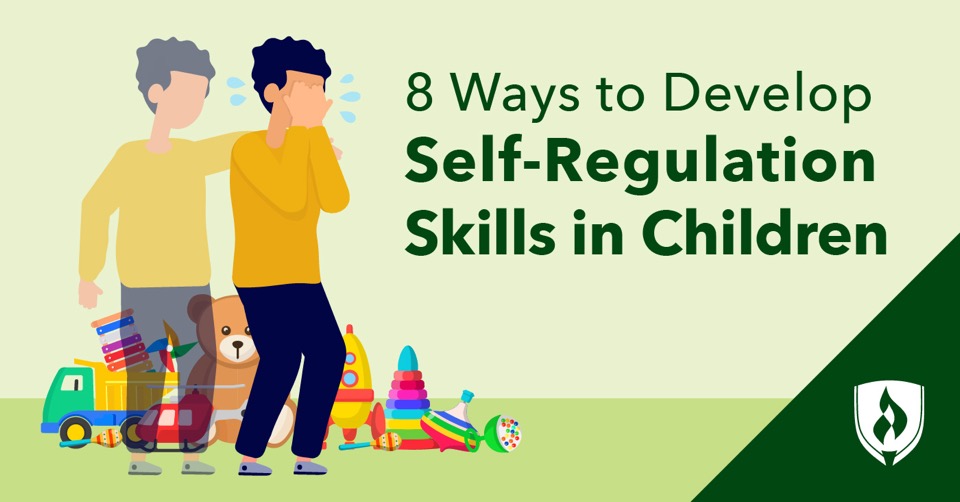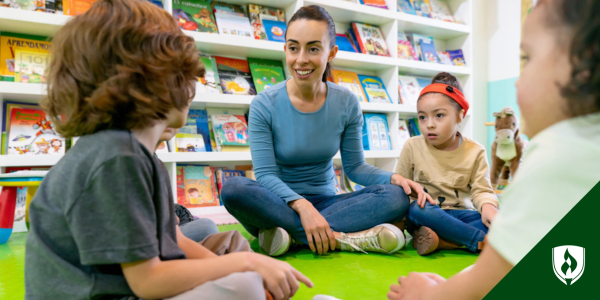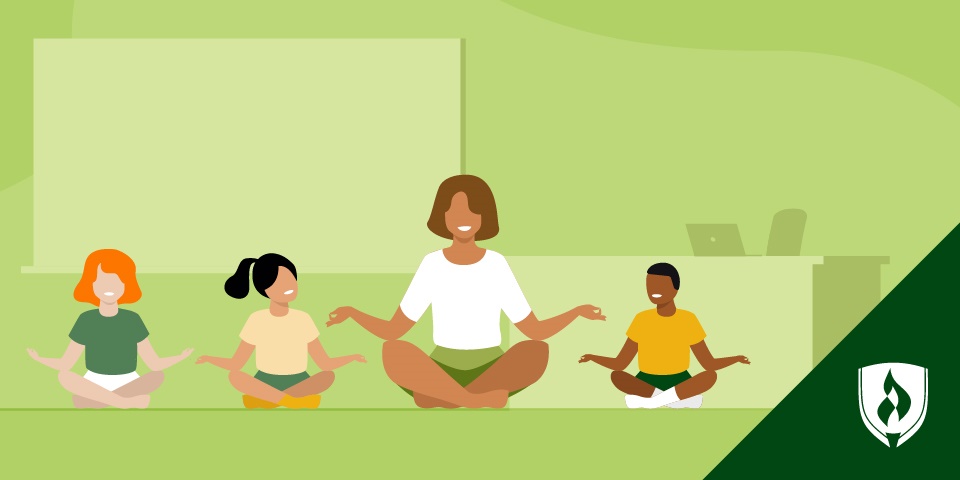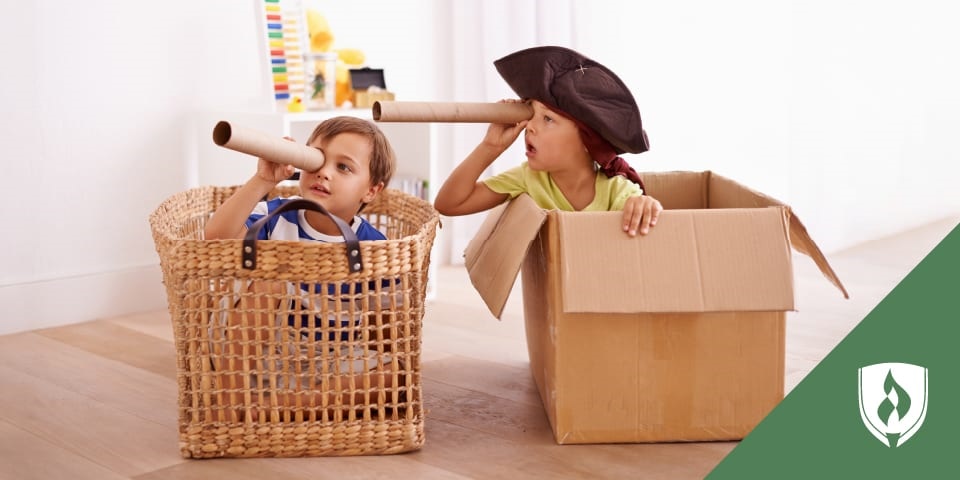
Picture this: It’s a beautiful Friday morning. The excitement for the upcoming weekend is firmly on your mind, and you’ve put on some of your favorite music for your drive to work. All-in-all, a good morning commute—until some careless driver speeds past and decides to cut you off. Thankfully, you avoid the worst possible outcome, but the abrupt actions of this jerk driver have now thrown your pleasant morning mood a curveball.
In this moment, your brain has some work to do. Your first reaction to a powerful, disruptive emotion might be to desire retribution. But rather than laying on your horn or exacerbating the situation with a risky road rage maneuver of your own, most will take a deep breath and continue on with their day.
That is called self-regulation—something your brain has been working on since childhood to help you cope with the strong feelings that arise in circumstances like this. Self-regulation is a learned process for your brain. It takes time to develop these skills, as we can (ideally) grow from tantrum-throwing toddlers into people who are able to balance their feelings and actions.
So, what exactly is self-regulation, and how do we help kids develop these skills? Read on to find out!
What is self-regulation, and why is it important?
Self-regulation is the conscious act of managing your thoughts and feelings, typically in pursuit of a goal. Self-regulation is the way we deal with our strong feelings so they don’t overwhelm us and cause us to act in a way we’d regret.
For children, self-regulation is central to facing all the obstacles that come up throughout a day: A disagreement with a friend, answering a question wrong in class, what happens when a classmate cuts ahead of you in line and so on. Developing self-regulation skills can help kids deal with their day-to-day lives, leading to better performance in school, better relationships with others and fewer behavioral difficulties.1
Let’s take a look at some of the various practices that kids can use to develop self-regulation skills on their own.
8 Ways children can develop self-regulation skills
Here are eight different practices that kids can use on their own, or with help from adults, to build their self-regulation skills.
1. Practicing intentional breathing
Perhaps the best self-regulation strategy is the one most immediately accessible to a child—taking deep breaths. Teaching children to calm their bodies through breathing can be a great first step to help them regulate and let the moment pass.
Of course, telling a child to “Just breathe!” in the midst of a breakdown doesn’t always work. But there are many creative ways to practice this skill. Try using bubbles, “animal breaths” or one of the other creative breathing practices that will incorporate some fun into this calming practice. Steady reinforcement of the idea that deep breathing is just what you do when feeling overwhelmed is key, so be sure to practice and demonstrate it as an adult as well.
2. Reading books
For kids, visualization can be a key part of their learning process. There are a wide variety of age-appropriate picture books that give kids a chance to visualize the self-regulation process through a story about another child struggling with their feelings the same way they are. Add in some self-regulating stories as part of the bedtime routine, and you’ll be laying a foundation for the next day when the strong feelings are going to arise.
3. Sleep routine adjustment
Lack of proper sleep is a health risk that can even affect kids five years old and under. For young kids, sleep plays a key role in the development of memory, attention span, behavior and development of motor skills. If breakdowns and tantrums have been increasing lately, it may be helpful to look at the structure of bedtime.
A consistent routine that may include fewer electronics, less lighting in the room and a bedtime story might be just the adjustment that a child needs to be better set up the next day to regulate their emotions.
4. Board games
Anyone who’s been on the losing end of a Monopoly® game’s slow spiral knows exactly how these games can test your frustration-related worst impulses. But it doesn’t have to be the case for little ones, as age-appropriate board games can be a great introduction to following directions, taking turns and perhaps one of the biggest challenges for a child, learning how to respond appropriately when you don’t win.
Trying various board games in a home setting can be a great introduction for kids on how to begin to manage the complicated feelings that arise when things don’t always go the way you expected.
5. Gauging emotions
One of the first steps to making a change is recognition. For kids still in the process of understanding what their various feelings are, finding ways to give language and expression to those feelings makes a big difference.
One of the best ways for kids of all ages to gauge their emotions is by using a feelings thermometer. As a child grows older, you can make the illustrated feelings more complex. This can be a practice throughout childhood and even into adulthood.
6. Taking a break
Recess isn’t just important because it’s a break for the teachers or a time for kids to be physically active; it is also important because it gives children’s brains a break. Taking breaks to move your body is actually a necessary part of human development.
Using breaks for playtime, outside time or just straight-forward rest time can be a winning strategy for giving a child a chance to manage all that is going on inside their head.
7. Imagination and role-playing
Imagination and role-playing can at first glance be similar to what happens during reading time, but the key difference is agency. Role-playing activities put your child in the driver’s seat of the imaginary scenario. When they role-play, they have the chance to act out and imagine some of the emotional quandaries they may have experienced.
This role-playing activity may require you to work on and stretch your own imagination a bit, but with a little bit of prep work, you can help the child create a scenario where they have to work through some of the exact feelings they’ve been struggling with, just in the imagined world.
8. Encourage prosocial behaviors
“That was really kind of you!” One of the best ways to help children develop their self-regulation skills is to catch them in the act of doing things well and offer positive reinforcement. Promoting prosocial behavior will help kids identify the correct actions to take rather than just getting burnt out by trying to avoid the wrong ones.
Build a foundation of self-regulation for the next generation
Developing self-regulation in a child is a brilliant way to set them up for success long term. Early childhood education professionals have the opportunity to be a positive influence in the lives of children in ways that stretch beyond building solid self-regulation skills. Could joining their ranks be a good fit for you? Check out our articles "Working with Defiant Preschoolers: What Educators Should Know", "9 Signs You Should Be Teaching Preschool" and, "Early Childhood Mental Health: 8 Things ECE Professionals Should Know".
1K.D. Rosanbalm & D.W. Murray, “Promoting Self-Regulation in Early Childhood: A Practice Brief,” Office of Planning, Research and Evaluation, US. Department of Health and Human Services, 2017. [Accessed November 2022], https://fpg.unc.edu/sites/fpg.unc.edu/files/resources/reports-and-policy-briefs/PromotingSelf-RegulationIntheFirstFiveYears.pdf.




